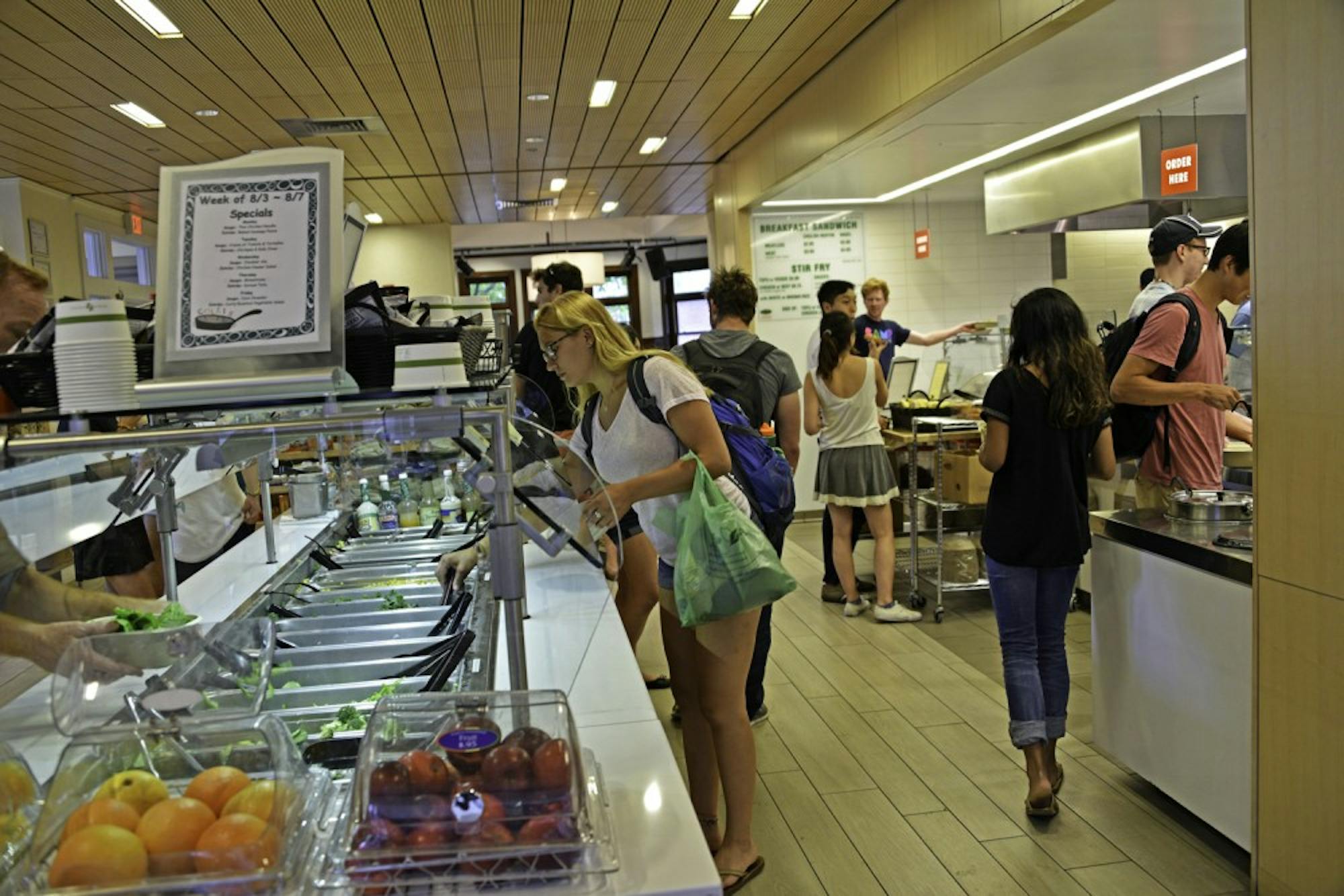According to a 1955 news clip, “It didn’t cost Dad as much in those days to send Junior to college.” In the article entitled “Dartmouth Boys Found Cost of Food Low in ‘06,” the author regarded a 1906 Dartmouth “supper” menu with the vague resentment towards years of inflation with which we might view a decades-old list of food prices. It’s hard not to be swept away by a similar sense of nostalgia when eyeing the $7 fruit cups currently sold at the Hop.
Hundreds of years of history relating to Dartmouth’s dining policies lie in the Rauner Special Collections Library, of interest to very few people except myself. Among these letters, files and memorandums are gems from a bygone era of reporting, before news got so self-serious — consider the immediately captivating and majestically brief 1979 article from The Dartmouth entitled “Killer Dies,” reporting a murderer’s capital punishment.
Killers aside, Rauner materials tell a long tale of students’ dislike of dining options and price increases. The discourse on Dartmouth food is a kind of collective inheritance, passed down through generations and weaving together classes long departed.
In the same issue of The D as the essential “Killer Dies,” I noticed a cartoon toward the bottom of the page depicting a malevolent Ma Thayer (the “Uncle Sam” of Dartmouth dining political cartoons) tossing burgers at a desperate student already drowning in them.
It’s mythologically dramatic, but artistically eloquent: Dartmouth students dislike repetitive dining hall options. This has never been a secret and persists to this day. Former Dartmouth Dining Association editor Paul Moore admitted, “students [tend] to downgrade the monotony of the menu … ‘cheeseburgers again,’ they say.” He then pointed to the “immense diversity” of the meal plan, citing the “90 different vegetarian items, 80 different luncheon entries and 80 different dinner dishes” planned just for the upcoming fall.
The lack of variety is even harder to critique today, considering Foco’s kosher and gluten-free stations and the newly-opened campus cafes. Greater dietary inclusivity is only one way in which the Dartmouth of yesteryear would be unrecognizable to students today. As the Dartmouth Dining Association reminded students many years ago: “Sweaters at dinner will not be regarded as acceptable.” Imagine telling that to Green Key partygoers at their post-festival Foco.
Since Junior’s day in 1906, we’ve swapped collars at dinner for buffalo tender quesos at late-night, but some things never change. No matter how diverse the options get, complaints abound and prices will rise. In fact, these price increases have historically been less than similar increases in raw food costs.
In 1979, amid an era of equal price volatility, “Dartmouth’s meal prices rose 3.2% on average last year, compared with 14% economic inflation,” according to Moore. A 1917 notice from Dartmouth Business director Homer Eaton Keyes read: “An advance in the cost of food supplies is something the consequences of which none of us can long escape. The management of the Dining Association has … accepted a recurring deficit month by month … This can no longer be done with any degree of safety.” Of course, Keyes was discussing adding a few cents to the price of hotcakes and grits, but there’s nothing about this reasoning that couldn’t apply 105 years later.
Nonetheless, the DDA and later Dartmouth Dining — following a rebranding wherein meal plans became compulsory for first-year students — have delicately walked the line between wholesome food provider and profit-seeking operation. In a notice outlining the DDA’s objectives for the upcoming 1989-1990 school year, amidst goals like “develop[ing] healthful and tasty alternative dessert, utilizing more fresh fruits,” is the mission of “increas[ing] daily sales, given a staff no larger than present.”
Finally, how could one possibly forget the lettuce fiasco? During the 1970s, in a moment where labor politics met dining options, Moore said that DDA was facing controversy about whether to continue purchasing non-union-produced lettuce, and presented students with a referendum on the (apparently divisive) issue.
With diplomatic grace, Moore’s referendum presented students with a choice as to which brand of lettuce the students would prefer: union lettuce, non-union lettuce or other. The ballot I examined in Rauner was filled out with a pragmatism that would be familiar to Dartmouth students of today: “Get whatever’s cheapest.”




